Sufi Order of Rochester – Rochester, NY
Visiting the Sufi Order of Rochester and experiencing a ceremony first hand.
by Chris Clemens
This project began with a desire to visit places of religiosity that were curious or had a particularly interesting history. Though it wasn’t our intention, soon the people at each location became just as intriguing as the site itself.
Part of our interest has always been an immense fascination with the process by which humans prescribe a sacred status to a geographical place. Meeting people and hearing about how their church or temple or synagogue is sacred to them is really interesting.
The story of our visit to the Sufi Order of Rochester is one of those that really encompasses the idea that a sacred space doesn’t have to exist within a specific type of physical structure. The site doesn’t need to have architectural criteria that determines how spiritual it might be. Rather, the people who spend their time within the physical structure and their practices are what make it sacred.
For example, the carriage house at 494 East Ave originally stored buggies and tack. Now though, it has been transformed into a place of fellowship and worship for the Sufi Order of Rochester.
What Is Sufism
Sufism is probably one of the most confusing religions I have read about. In fact, some might tell you that Sufism isn’t even technically a religion.
Many believe Sufism to be a branch of Islam. Others contend Sufism is a philosophy that predates Islam. They would say Sufism has roots in Zoroastrianism, the oldest recorded religion on the planet. Though most Sufi history can be traced in lineages to Prophet Muhammad, many Sufi tenets are found in other religions.
Some Muslims believe Sufism is the mystical portion of Islam without the laws and specific worship practices. Others feel it’s entirely different and that anyone can be a Sufi and still adhere to any other religion.
Sufism Comes To Rochester
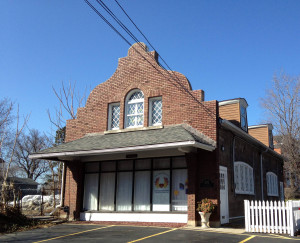
Around the turn of the 20th century Hazrat Inayat Khan was told by his teacher he should leave the East. He followed those instructions and migrated to the West, using his love of music to bring the cultures of the Middle East and United States together. The first of any Sufi to migrate to the West, Khan dedicated himself to planetary consciousness and spiritual alignment among all humans. Khan believed the message of Sufism would catapult the next wave of spiritual evolution in the world.
In 1915, he founded the Sufi Order International; a move that was the result of some disagreements among believers back home in the East. With S.O.I. an official entity in the West, his followers sprang to action. They immediately set out offering seminars, classes, outreach and teaching the West about this ancient, mystic way of life.
Headquarters for the order are in New York state, and while there are other branches of the order in the state, Rochester is by far the most stable and prominent.
There are only about thirty Sufis in Rochester who regularly interact and commune. Among them is a smaller, core group who have been practicing and worshipping together since the 1980’s. They’ve been successful in those decades meeting in any place they could find, but recently found a dedicated home. It was only last year that the group came to inhabit the old carriage house.
How To Become A Sufi
There are a few ways to become a Sufi but the most common way is to be initiated by another member.
To become initiated as a Sufi, you would find someone that is already a member, then that person acts as a mentor throughout the initiation. Once the initiation is complete, they are able to receive a Sufi name. I sometimes struggle to remember names, so it was even more difficult to keep track of two for each person!
Visiting

We were attending a Sufi Order International event occuring one Saturday each month called “Eat, Pray, Dance”. While I am perfectly comfortable with one of those, we approached the evening with an open mind.
Just inside the door, we took our shoes off, placed them with everyone else’s and stepped into the main room. That had long tables set for dining and two smaller tables with a large spread of food. I have to admit, knowing that environmental health and eco-awareness play such an important role in Sufi beliefs, I expected the parking lot to be full of Priuses and the tables to be filled with vegan-friendly, soy, gluten-free type things that you get at the local co-op.
While there was plenty of those things, it was still surprising to find a meat dish on the table!
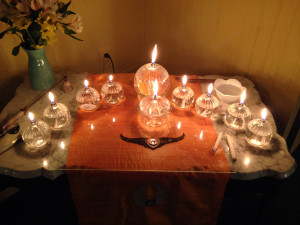
In less time than it took for me to write that last sentence, we were already chatting with a group. We introduced ourselves but they were mostly expecting us and already knew about the blog. Some people introduced themselves with their birth name as well as their Sufi name.
Eat
After a few minutes of people mingling and chatting, everyone began circling the food table and getting ready to eat. The event we were at was a bit of a potluck dinner. Each person brought something to contribute and then all sit family style at tables.
We sat with a few new friends, one of which was Rev. Wadud who originally extended the invitation for us to join. The group seemed just as interested in the concept of this blog as we were about the concepts of Sufism. As a result, dinner conversation was a volley of everyone asking and answering questions about religion.
After most people were done eating and seemingly without any particular prompt, people started taking down the dinner tables. The same space was reimagined as chairs were arranged into semi-circles facing the altar.
Pray
The altar in Rochester is quite simple, and from what I’ve gathered online, that’s similar to other orders as well.
There are candles representing six major religions. They also light candles representing the Sufi religion and one representing all known and unknown religions. All eight candles surround the Sufi symbol: a heart with a moon and star with wings.
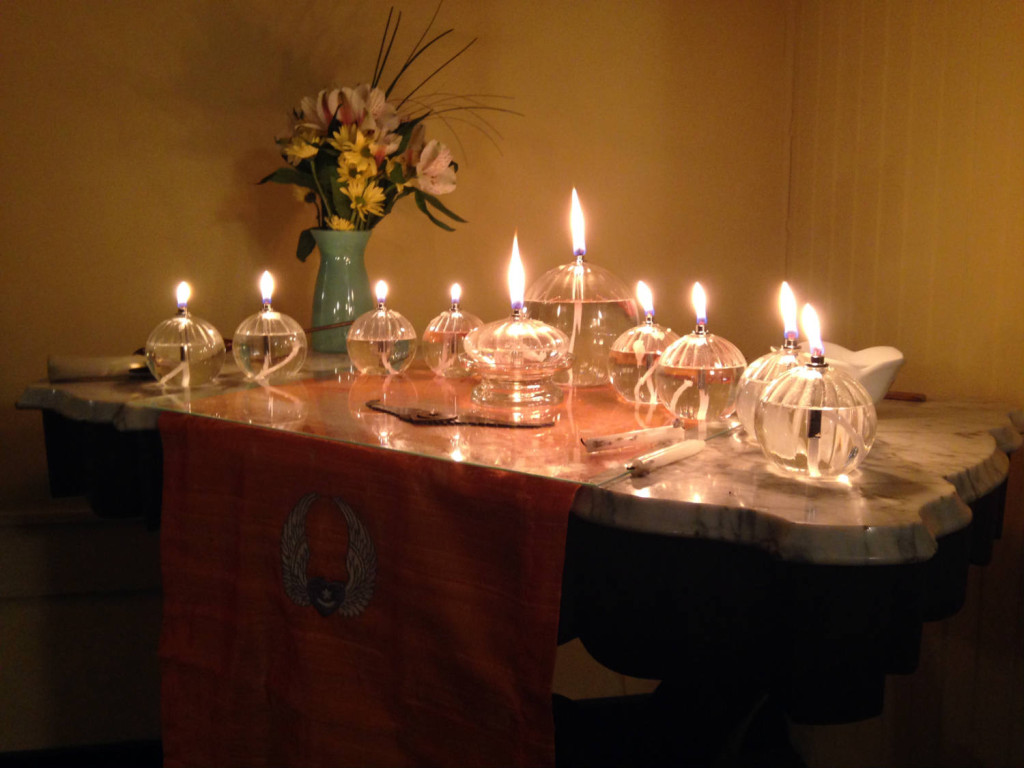
While each initiated Reverend takes turns leading services, this particular evening was led by our new friend Rev. Wadud. The group recited together, “Toward the One, the perfection of Love, Harmony and Beauty, the only being, united with all the illuminated souls who form the embodiment of the Master, the Spirit of Guidance.”
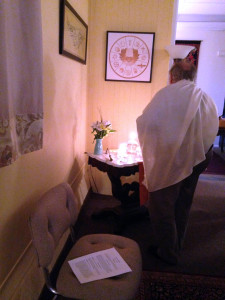
Thes invocation reflects the Sufi belief that there is only one true God. The idea is that all religions just use different names and stories and interpretations of that same God. The invocation kicked off the theme for the entire service, inspiring everyone to contemplate if there indeed is one absolute truth.
Some ideas to ponder were offered, and then scripture readings from the Hindu ‘Svetasvatara Upanishad‘, the Buddhist ‘Lankavatara Sutra‘, the Zoroastrian ‘Zend Avesta‘, Native American Dakota Tradition, the Tao Te Ching representing the Divine Feminine, Deuteronomy 6.4 and Midrash, Pesikta Kahana from the Jewish faith, 1 Corinthians from the Bible to represent Christianity, Qur’an reading 23.91-92 for Islam, and then a reading from Inayat Khan’s (the founder of the Sufi Order International) writings to represent all religions known and even unknown were each read aloud to help inspire the meditation about whether or not there exists only one absolute truth.
More Prayer
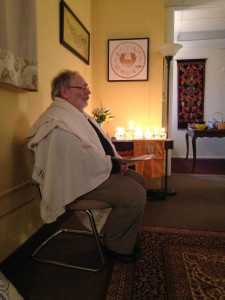
After a few more readings, everyone present was invited to share openly.
Though the service clearly had a leader, portions of it seemed similar to a peer-mediated group. At certain junctures everyone appeared to be equal in their ability to offer spiritual insight. In this section of the evening, the leader in acted almost as a moderator, inspiring the group to be involved.
A few people offered their own insights about the concept of one truth. One person shared while during meditation, he envisioned the many lights of the candles on the altar coming together as one.
It seemed the ideas of Sufism were entirely about unity and that all sentient beings are joined by the same spiritual force. The main difference seemed to be how you choose to refer to that force. The idea that different religions exist seemed merely a perspective. Culture and nationality were a function only of setting people apart by those distinctions and the differences experienced among people are just that: experiences only.
The reality for Sufis is that the celebration of a connectednesss among all and a connection to the spirit of the Earth is what encompasses those beliefs.
Dance
The weather that evening was bringing one of the last troublesome snowstorms of 2014. At the close of the service a few people decided to leave after the first 2/3 of “Eat, Pray, Dance”. The rest of the crew cleared the chairs and transformed the multipurpose space for the third time that night. Rev. Wadud strapped on an acoustic guitar and others seemed to instinctively huddle around.
While I have experienced a number of different things while visiting religious places, I have never, ever agreed to dancing.
Ever.
Before they went any further with the third portion of the evening, another Reverend motioned for me to approach her and she handed me a hand drum. Immediately realizing that the third portion of the evening was about to be destroyed by my inability to keep any semblance of rhythm or time, I immediately took solace in knowing that my friend would be the one dancing. The Reverend who handed me the drum also led the group with instructions for the lyrics and the choreography, most of which took place in a circle surrounding myself and Rev. Wadud.
Even More Dance
While I know that members of the Sufi Order International will be reading this, I can’t really leave out the fact that my friend and I were connecting on our own separate level in the room, shooting knowing glances at one another that read, “What did we get ourselves into with this one??”
Through three songs that each sang verses in honor of a different faith, the group danced in more and more difficult choreography until the final song had each member of the circle rotating from person to person pairing up in motions of spiritual uplifting. As an onlooker from the center of the group, by the last song I noticed something weird had happened.
The group began somewhat unsure of what the next move would be. It didn’t feel like it was important to know what movement came next, but rather to try and have as much fun in the moment. The dancing was definitely more of a joyous celebration of the moment than a choreographed production. In fact, in some ways it felt similar to a Grateful Dead concert in that everyone was part of the group and each part played an important role in the coming together of the celebration.
More Song, But Less Dance
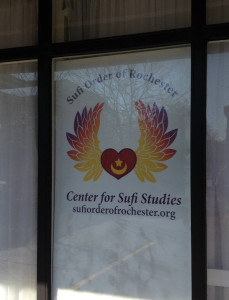
After the third song chairs were brought back for the fourth and final room set up of the night.
Wadud kept his guitar and I got to hand off my drum to someone much better at keeping time. During this last part of the evening the group sang a few more songs and then made a couple announcements.
Here the entire group stood and joined close together in a circle with arms around one another. While a closing thought was offered, a few others seemed to join in and share their thanks for being there that evening. After separating, everyone mingled a bit more and chatted with one another, but the brewing Spring snow and ice that was building outside seemed to be steering all of us to get to our homes before the worst of it set in.
Final Thoughts
While the entire evening took us further out of our comfort zone than the majority of any other place we’ve visited, every single person that we met that evening was incredibly friendly, welcoming and genuine.
Though we may not be perfectly at home with prayer and dancing and singing aloud, neither one of us ever felt out of place. Maybe it was the cohesiveness of the group but, my friend and I felt as if we had always been part of the family.
One of the things we noted to each other afterward was the difference how we remained engaged. There have been numerous other faith services we’ve attended where it’s been easy to drift and lose focus on what’s being shared.
The entire evening at the Sufis “Eat, Pray, Dance” almost required attention, and it was nearly impossible to drift off and think about what groceries I’d need to get the next day or how I had to stop and get gas on the way home. That engagement was obvious to both of us not only because of our own experiences in paying attention, but because everyone in the room seemed to be engaged as well.
The earlier insight about all of the candle flames coming together seemed metaphorical for the entire evening. Similarly, all of the different people in the room seemed to move and act as one for the whole celebration. It really was an incredible honor and learning experience to be part of.
Connect With The Rochester Sufis
Sufi Order International, many thanks!!
The Sufis have a great website with a calendar of events and more reading you should go checkout here. They’re also on Facebook and even have been tweeting, go follow them!!
The Rochester Sufis also host events that aren’t necessarily considered services. If you’re looking to get your foot in the door without having to dance, you may want to checkout their monthly Rumi Cafe. During that event they set up like a coffee shop and have different events like poetry readings or live music.
*This post originally appeared on ExploringTheBurnedOverDistrict.com
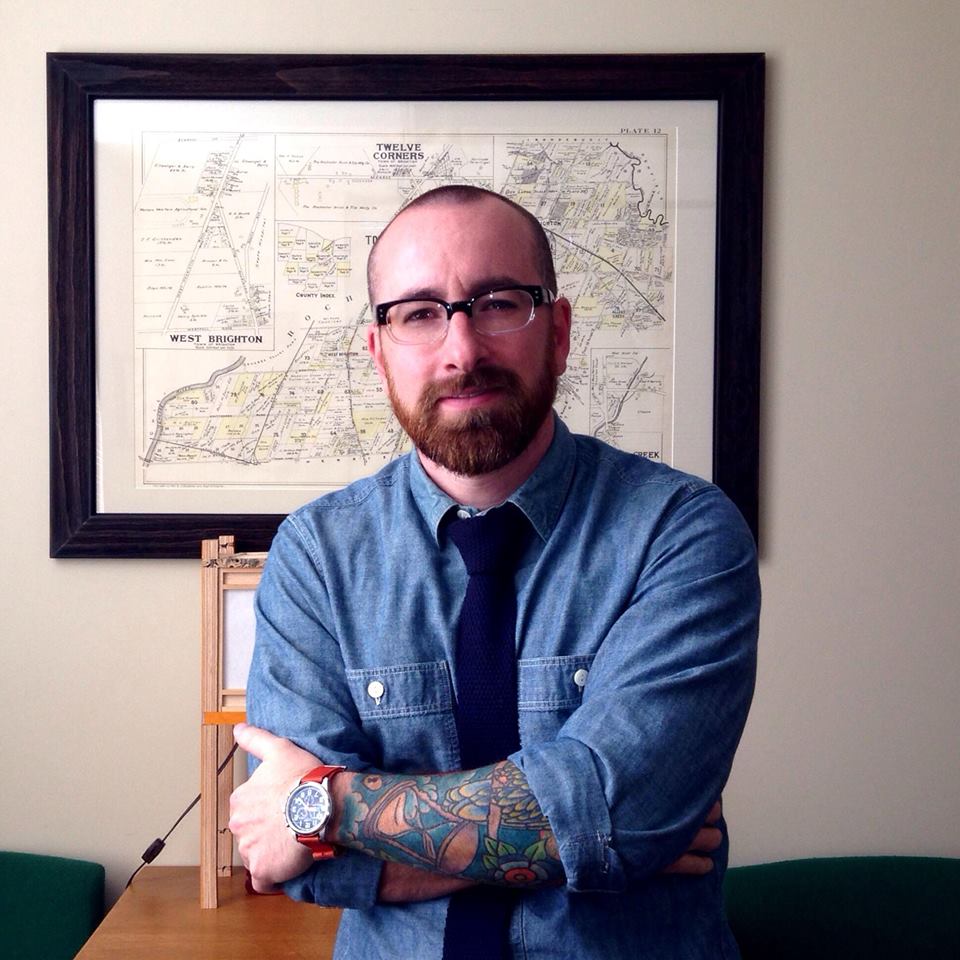
Chris Clemens is the Founder/Publisher of Exploring Upstate. From his hometown in Rochester, he spends as much time as possible connecting with the history, culture, and places that make Upstate New York a land of discovery. Follow him on Twitter at @cpclemens

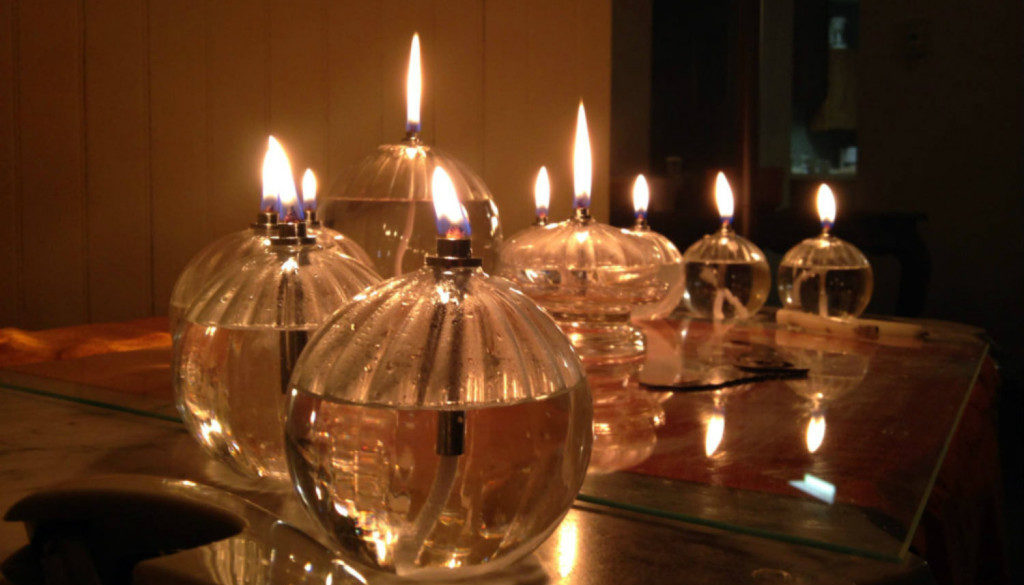


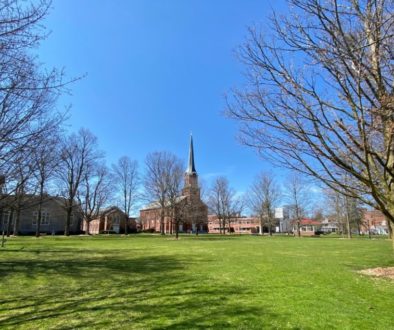

April 25, 2014 @ 2:56 pm
‘ell-o Christopher,
A very good read.
Whirling Dervishes